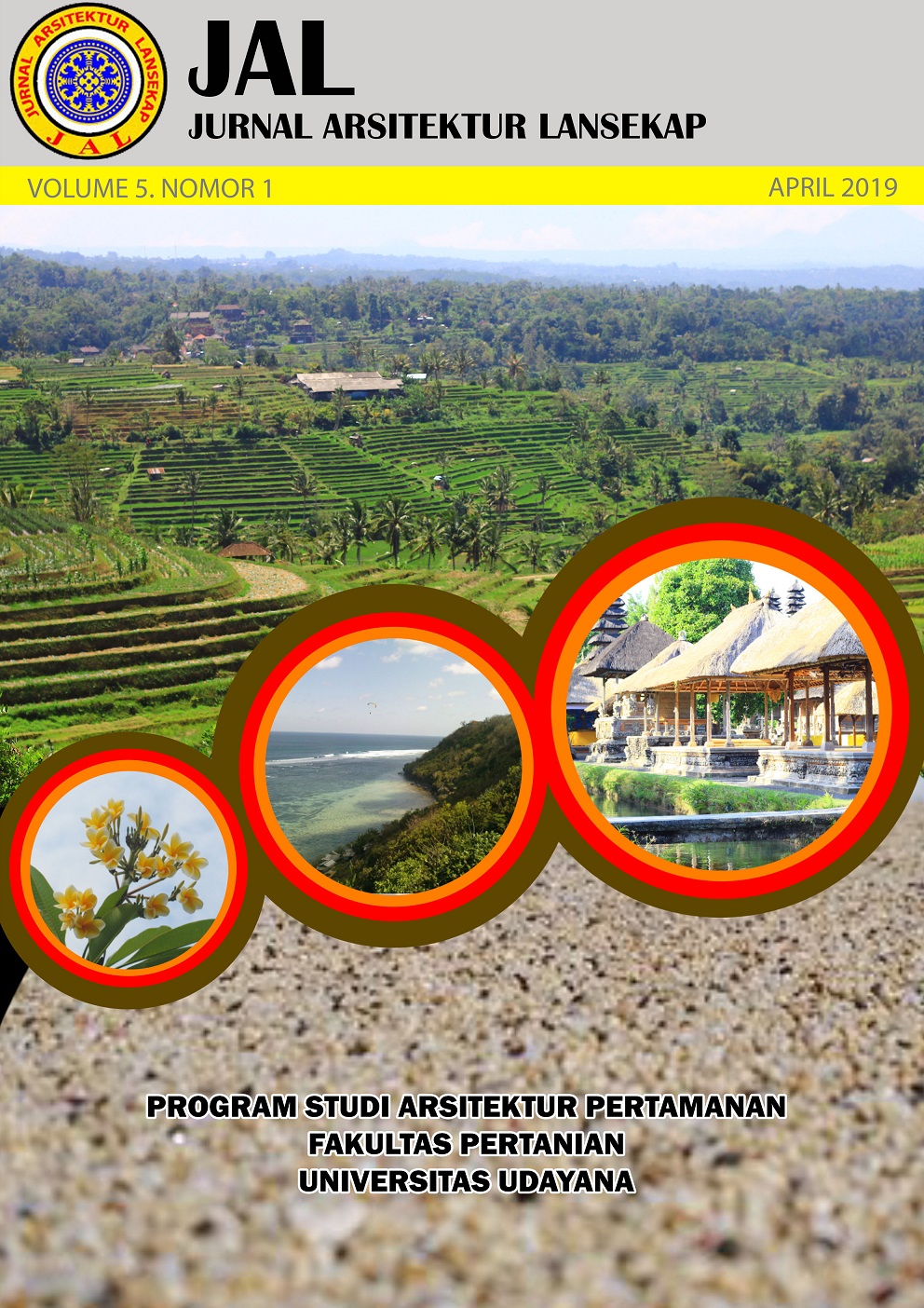Identifikasi lanskap vernakular di Kampung Kusamba, Klungkung, Bali
Abstract
Identification of Vernacular Landscape in Kampung Kusamba, Klungkung, Bali. Kampung Kusamba is a place of multicultural society with the majority of its population is Islam that lives harmoniously with indigenous Balinese who embrace Hinduism. The interaction of people with different cultures over a long period of time led an influence on the landscape. These different cultures bring architectural characteristics and unique landscape according to their own culture. The diversity of architecture and landscape which exist in Kampung Kusamba makes the vernacular landscape become different and has its own distinctive characteristic. The different of societal cultures affect the landscape in Kampung Kusamba which becomes the purpose for the writer to do research. The aims of this research is to explore on the form of vernacular landscape as cultural representation of society due to the influence of the occurrence of different cultural interaction process in Kampung Kusamba. This research used survey method by observation, interview and literature study technique. Research on the vernacular landscape morphology of Kampung Kusamba Village was restricted to find a spatial patterns and landscape elements. As a conclusion, Kampung Kusamba is a multicultural society that is formed on various ethnicities namely Bugis, Banjar, Java, Sasak and Bali with indigenous peoples who embraced Islam. There is one house with spatial pattern which is the result of assimilation of two different cultures. Spatial pattern is divided based on profane-sacred like Hindu Balinese house but not followed by the use of wind direction orientation. Hardscape elements mentioned by Statue of Habib Ali bin Abu Bakar Umar Al-Hamid shows the interaction between Islam that lives harmoniously with indigenous Balinese who embrace Hinduism. Softscape element does not show any special pattern as special characteristic of Kampung Kusamba, but there are only coastal plants. The building's façade is shown by the result of different cultural interactions can be seen on the roofs, walls of houses and minarets of the Al-Mahdi Mosque.
Downloads
References
Badan Pusat Statistik Kabupaten Klungkung. 2015. Kecamatan Dawan dalam Angka 2015. Badan Pusat Statistik Kabupaten Klungkung. Klungkung.
Desa Kampung Kusamba. 2016. Laporan Keterangan Pertanggungjawaban (LKPJ) Akhir Tahun 2016. Desa Kampung Kusamba. Klungkung.
Parimartha, I. G., I. B. G. Putra, L. P. K. Ririen. 2012. Bulan Sabit di Pulau Dewata Jejak Kampung Islam Kusamba-Bali. Huma Printing & Design Graphic. Yogyakarta.

This work is licensed under a Creative Commons Attribution 4.0 International License.
An author who publishes in the Jurnal Arsitektur Lansekap (JAL) agrees to the following terms:
- Author retains the copyright and grants the journal the right of first publication of the work simultaneously licensed under the Creative Commons Attribution-ShareAlike 4.0 License that allows others to share the work with an acknowledgement of the work's authorship and initial publication in this journal
- Author is able to enter into separate, additional contractual arrangements for the non-exclusive distribution of the journal's published version of the work (e.g., post it to an institutional repository or publish it in a book) with the acknowledgement of its initial publication in this journal.
- Author is permitted and encouraged to post his/her work online (e.g., in institutional repositories or on their website) prior to and during the submission process, as it can lead to productive exchanges, as well as earlier and greater citation of the published work (See The Effect of Open Access).
Read more about the Creative Commons Attribution-ShareAlike 4.0 Licence here: https://creativecommons.org/licenses/by-sa/4.0/.







